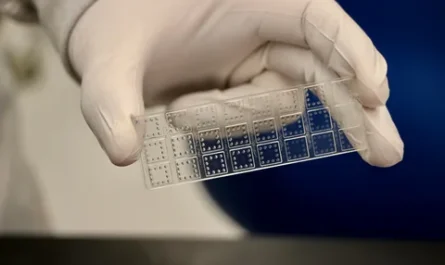Researchers from the Xishuangbanna Tropical Botanical Garden (XTBG) of the Chinese Academy of Sciences have discovered the interconnectedness of polyploidy and long-distance dispersal (LDD) in shaping the global species diversification of yellowcress, a plant genus known as Rorippa. Polyploidy refers to whole-genome duplication and has long been associated with LDD, a key biogeographical process. Their findings, published in Global Ecology and Biogeography, shed light on the joint roles of polyploidy and LDD in the evolution of Rorippa, which originated approximately 7.10 million years ago.
To investigate the possible influence of polyploidy on the biogeography of Rorippa, the researchers developed a comprehensive framework. By analyzing nucleotide data from plastid genomes and various low-copy nuclear loci, they constructed well-resolved and dated phylogenies for 58 Rorippa species. Subsequently, they classified different genome groups based on ploidy levels and traced their dispersal patterns and rates worldwide.
The study revealed that LDD played a significant role in shaping the amphitropical disjunction of Rorippa. Notably, polyploid species exhibited higher dispersal rates compared to diploids. The researchers identified five diploids and 21 polyploids resulting from transoceanic speciation events. Furthermore, polyploidization events following LDD were more common than those preceding it.
Moreover, the plastid biogeography analysis indicated that frequent LDD might have contributed to the amphitropical disjunction of Rorippa species, with polyploidy playing a significant role during the dispersal process. The overall global biogeography of Rorippa suggested that polyploidy potentially facilitated the success of LDD in the Southern Hemisphere.
The study highlights that polyploidy is both a driving force and a response mechanism to LDD in Rorippa. The researchers emphasize the synergy between polyploidy and LDD, providing insights into their joint roles in shaping species distributions. This framework contributes to understanding the biogeographical consequences of polyploidization and the impact of polyploidy and LDD on biodiversity.
Xing Yaowu of XTBG noted that these findings not only enhance our understanding of how plant species adapt and spread to new geographic areas but also offer valuable perspectives for the conservation and management of Rorippa, an important plant resource.
In conclusion, the study reveals the intertwined relationship between polyploidy and long-distance dispersal in the evolution of yellowcress. This research provides a deeper understanding of the mechanisms driving global species diversification and offers valuable insights for the conservation and management of Rorippa species.
*Note:
1. Source: Coherent Market Insights, Public sources, Desk research
2. We have leveraged AI tools to mine information and compile it




